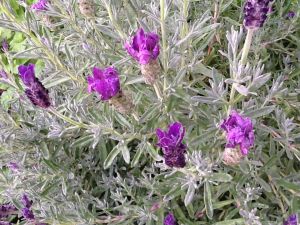_______________________________________________________________________________________________________________________
The Mint family has many relatives with over 3500 species and probably is the most beloved plant, family! Most of you will be familiar with many of the mint family plants: lavender, thyme, sage, rosemary, thyme, basil and peppermint, to name a few of the culinary plants used regularly. Also oregano, lemon balm, hyssop, motherwort, skullcap and the list goes on and on.
Generally, the mint plants are suitable for the head, heart and stomach.
So how do they work?
They contain volatile oils (strongly concentrated oils) with such names as menthol, thymol, citronellal, limonene, to name a few. When we smell these oils the nerve endings are stimulated and send impulses to the limbic system (emotions and memory) in the brain and other structures that manage sense in our organs. As these oils enter our blood they relax smooth muscles in the airways, circulatory system and intestines, thus relieving tension. As this relaxation of tension occurs, it helps our emotional state find a calm place, thereby helping with a sense of ease and harmony.
So many medicines are in your spice rack or just growing just outside your door.
- For nasal congestion, make a cup of peppermint tea.
- Use thyme as a facial steam to calm coughs.
- Feeling anxious or nervous? Make a cup of lemon balm tea and flavour with some honey.
- Crazy repetitive thoughts keeping you awake? Take some skullcap and smell some lavender.
- Bug bites driving you nuts? Put some lavender on them for immediate relief.
- Indigestion? Peppermint can help.
- Sick with a viral infection? Take some oregano!
The list of helpful mint family members goes on. Just a word of caution, some of these herbs can be too powerful for small children; always check with your local herbalist or other resources to determine their safety.
Have some fun and incorporate these mint herb allies into your daily life. Eat them, smell them, use them in your bath water and drink them. Sometimes just brushing your hand in the plants as you walk in your garden can bring a lovely sense of well being into your soul!
If you are interested in botany here are some of the characteristics of the mint family:
* Square (four-sided) stems. There are a few exceptions (loosestrife, verbena and nettle); however, these herbs do not smell minty.
*Strongly aromatic. Strong aroma due to their high volatile oil content, particularly methol.
* Pairs of opposite leaves that get smaller toward the top of the stem..
* Tiny irregular flowers with five joined petals.
* Flowers arranged in whorls. A cluster of flowers located at the base of the leaves or the end of spikes.
* Probably on your spice rack.
To learn more about Healing plants click here to check out
The Language of Plants course at the Academy
(c) Wendolyn
Disclaimer: The information, including but not limited to, text, graphics, images and other material contained on this website are for informational purposes only. It is not intended to be a substitute for professional medical advice, diagnosis or treatment. Always seek the advice of your physician or other qualified health care provider with any questions you may have regarding a medical condition or treatment and before undertaking a new health care regimen.
The owner of these written materials makes no claims as to the accuracy or completeness of any of the information, including any links. The owner will not be liable for any errors or omissions in this information.

